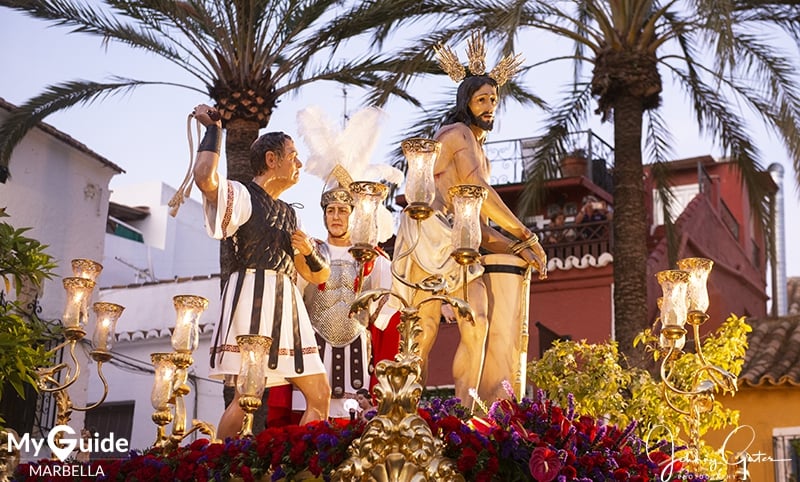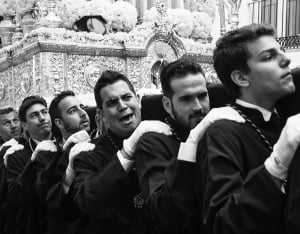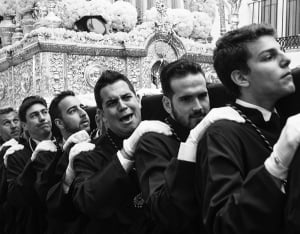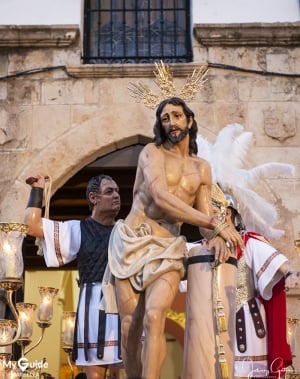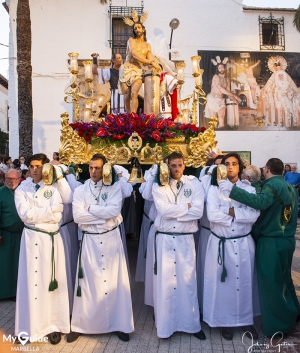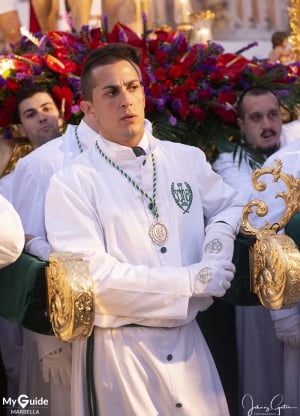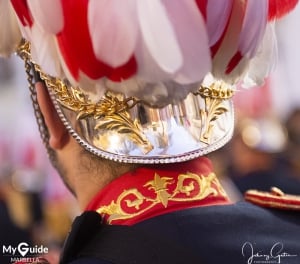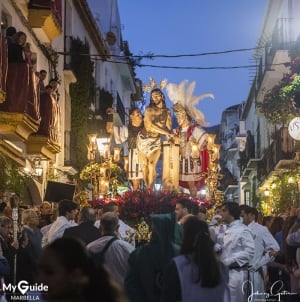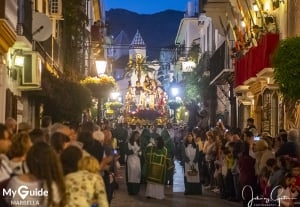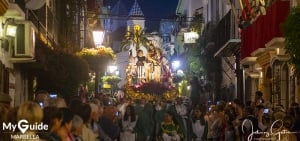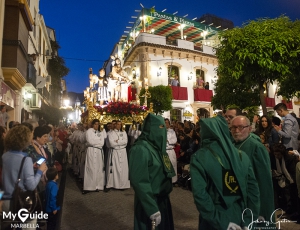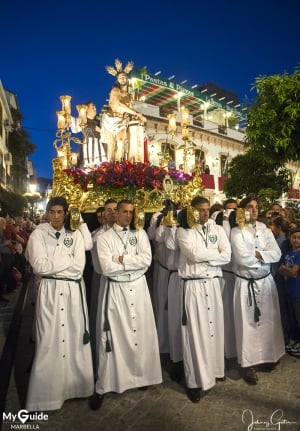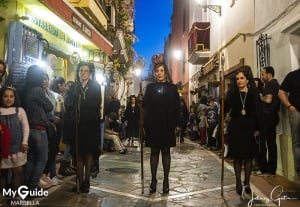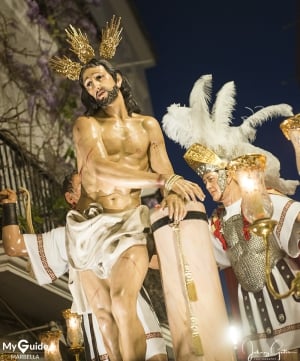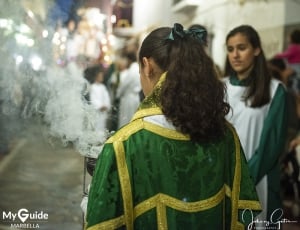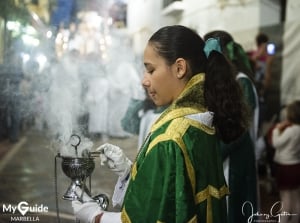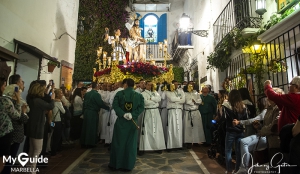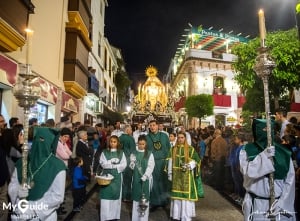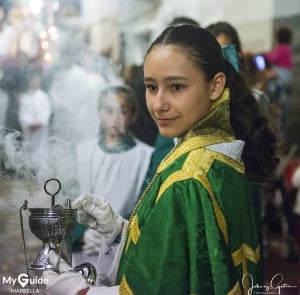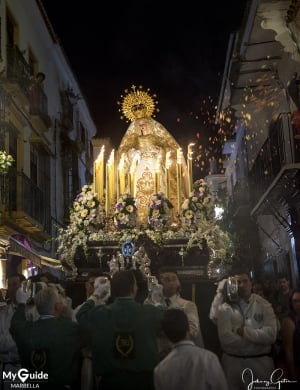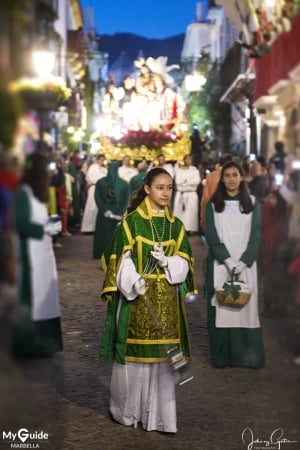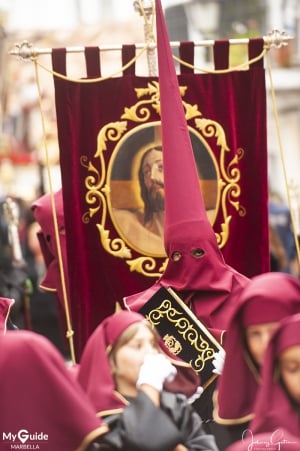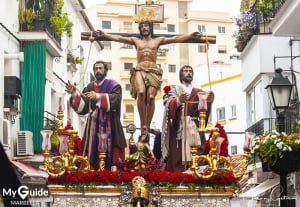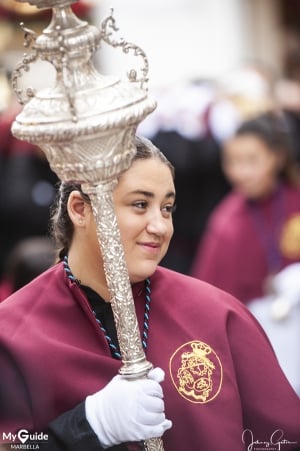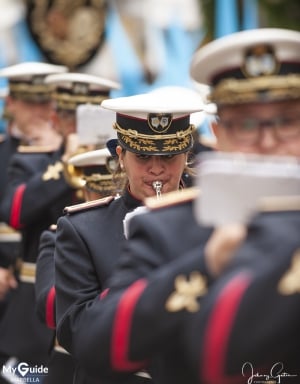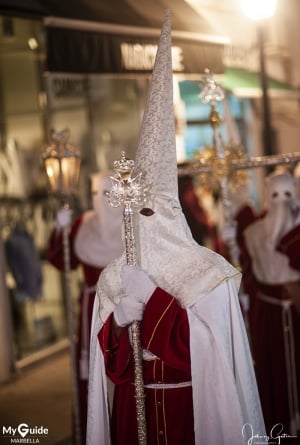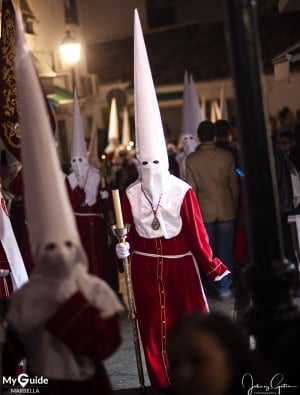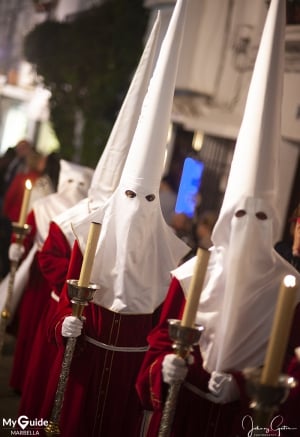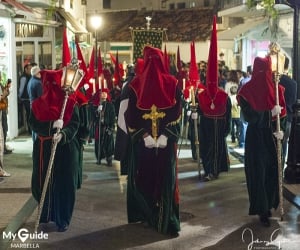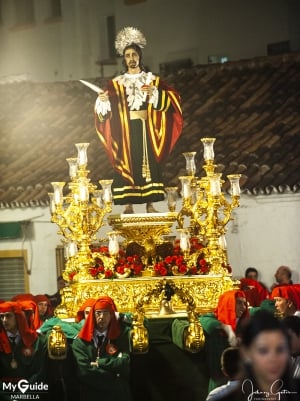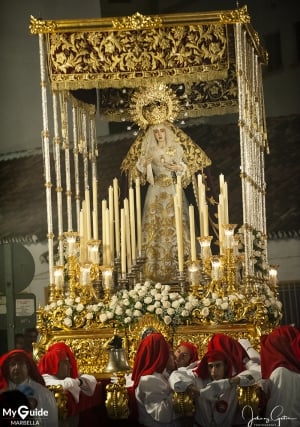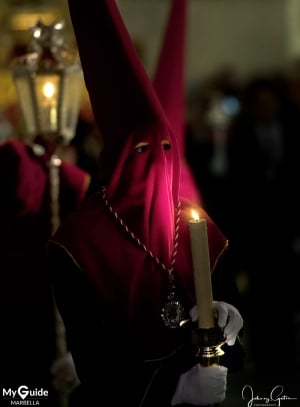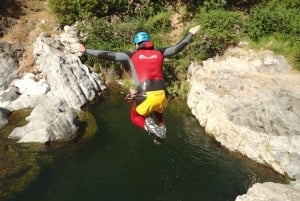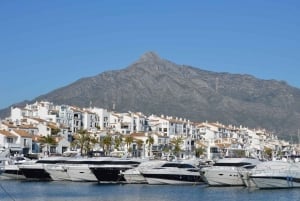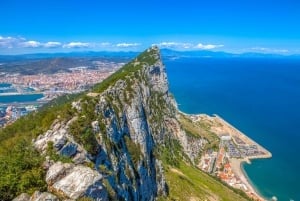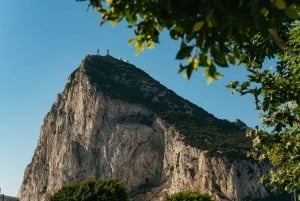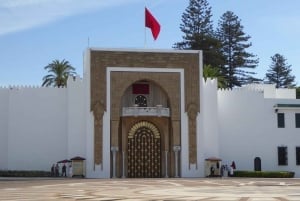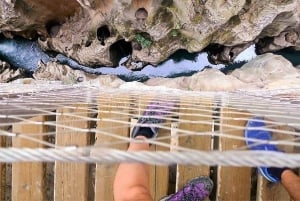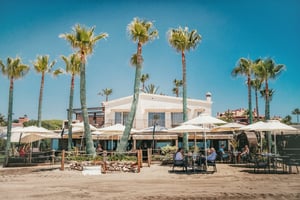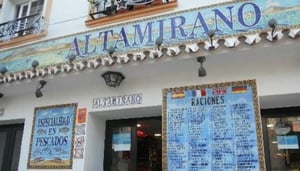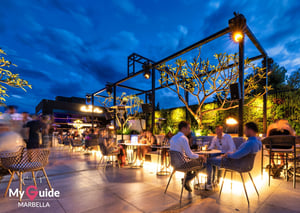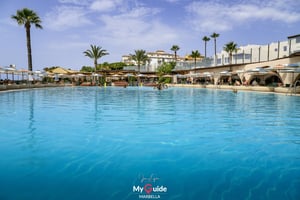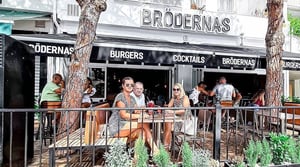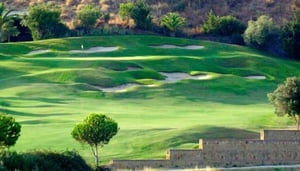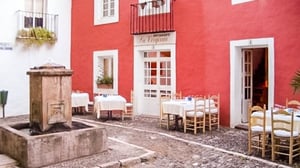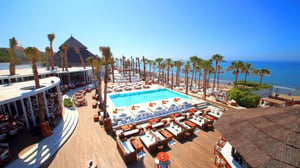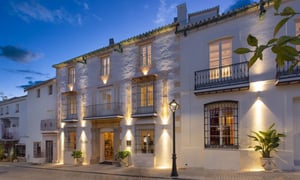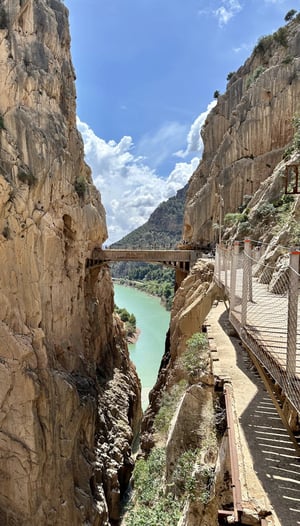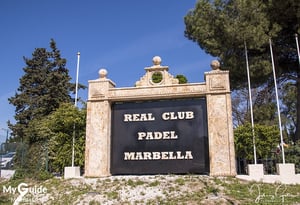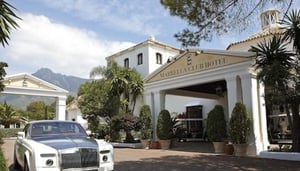Easter in Marbella
Easter or Semana Santa is by far the most important of all the Spanish festivals
Book Top Experiences and Tours in Marbella:
If youʻre booking your trip to Marbella last minute, we have you covered. Below are some of the top tours and experiences!- From Marbella: Guadalmina River Guided Canyoning Adventure
- From Malaga or Costa del Sol: Mijas, Marbella & Puerto Banus
- From Malaga: Day trip to Gibraltar and Dolphin Boat Tour
- From Malaga and Costa del Sol: Gibraltar Sightseeing Tour
- From Malaga and Costa del Sol: Gibraltar Tour
Easter in Marbella, eagerly anticipated by tourists and locals alike, is the signal that Summer is just around the corner. But of course, Easter, or Semana Santa (literally, Holy Week) is by far the most important of all the Spanish festivals and is held in almost every Spanish city, town and village during the last week of lent, the week before Easter.
In a tradition dating back to the 1500s, ornate floats or Tronos depicting the Crucifixion are carried through the winding narrow streets of Marbella's Old Town by the Brotherhoods from the different churches in the town. The first of these processions on Palm Sunday (Domingo de Ramos), leaving from the Chapel San Juan de Dios at 6 pm, is a happy occasion depicting Christ's arrival in Jerusalem complete with a life-size donkey. It's probably the jolliest of all the processions which gradually get more sombre as the week goes on.
Now let me explain a little about the attire of the Nazarenos that march with these floats. To the horror of many a first-time viewer, the penitential robe or Nazarene with its conical hat looks like something out of the movie Mississippi Burning! However, let me assure you this is where the comparison stops, as the Spanish were donning this attire hundreds of years before Custer was being taught a serious lesson in battle-craft at the Little Bighorn, and is an integral part of the festivities with the robes changing colours for each day through the week.
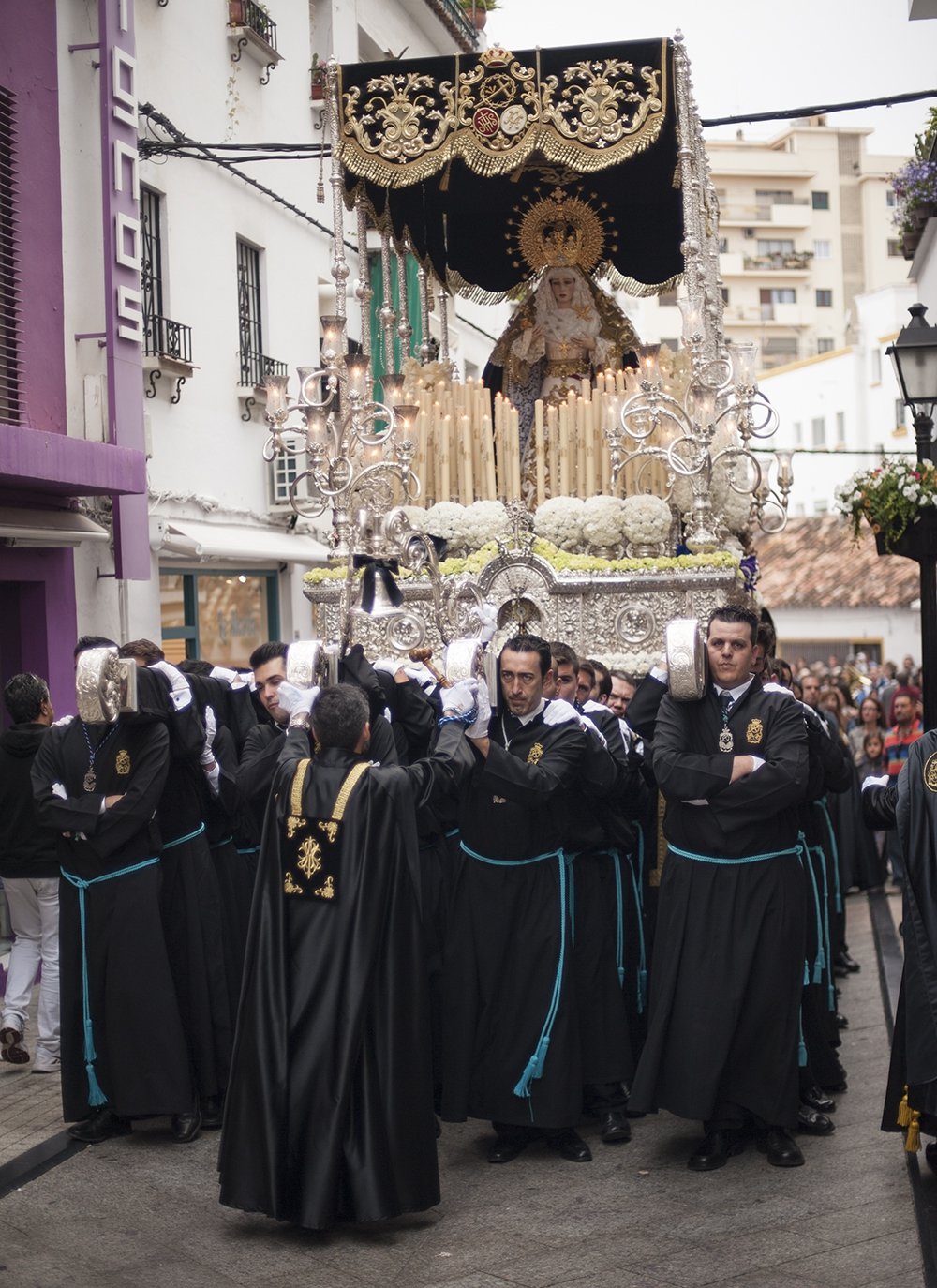 Monday
Monday
Tuesday
Next up, as the mood darkens is Tuesday's affair (Martes Santo) which brings into play the bad boy of the story, Judas, rattling his pieces of silver as he listens to the cock crow. There will be two "Tronos" being paraded through Marbella's Old Town today, one carried by 50 women and the second by 60 men in black tunics.Wednesday
Today brings us to Jesus, having been sentenced to crucifixion he is now depicted carrying the cross. Leaving the Plaza de la Iglesias at 20:30 with again two "Tronos" carried by 120 men each, with a procession of Pharaohs dressed in purple. You will see if you follow the whole week, which I heartily recommend, the processions are getting bigger and more spectacular as the week progresses.
Thursday
Thursday (Jueves Santo) is the big one as far as the week is concerned, with the brotherhoods from two churches taking to the streets and crossing paths as they sway through the town. The first leaves from the Ermita Calvario at 18:00 with two "Tronos" and the second from the Chapel Ermita de Santiago, with 3 "Tronos", resplendent in their red tunics. This procession is the one that takes the heaviest toll on the Nazarenes, with many walking or carrying blindfolded and barefoot, and will last around five hours. In order to view this procession, you would be wise to arrive in the old town a few hours before.Friday
Friday (Viernes Santo) and it's almost done, with the darkest and most solemn of the evenings laying Christ to rest and with all of the procession wearing black tunics, the body of Christ leaves the Chapel Santo Sepulcro at 21:00. This first procession is guarded by the Third Legion and well worth a watch as they twirl their rifles and shout "viva"! The second procession is silent and leaves Iglesias Incarnation at 22:00Saturday
Saturday has no parade and is a good time to take stock of the week and go for a nice long lunch at the beach and enjoy some sunshine!Sunday
Sunday (Domingo de Resurrection) is the final day. It's not an easy task to follow the whole week's affair, but if you do you will be rewarded with one of Europe's finest religious traditions. Following a mass at Iglesias Incarnation at 11:00 the final procession, with two "Tronos" this time, leaves at 11:45; to describe this part in words is very difficult as it really has to be seen, smelt and walked to appreciate the true magnificence of the Easter Week.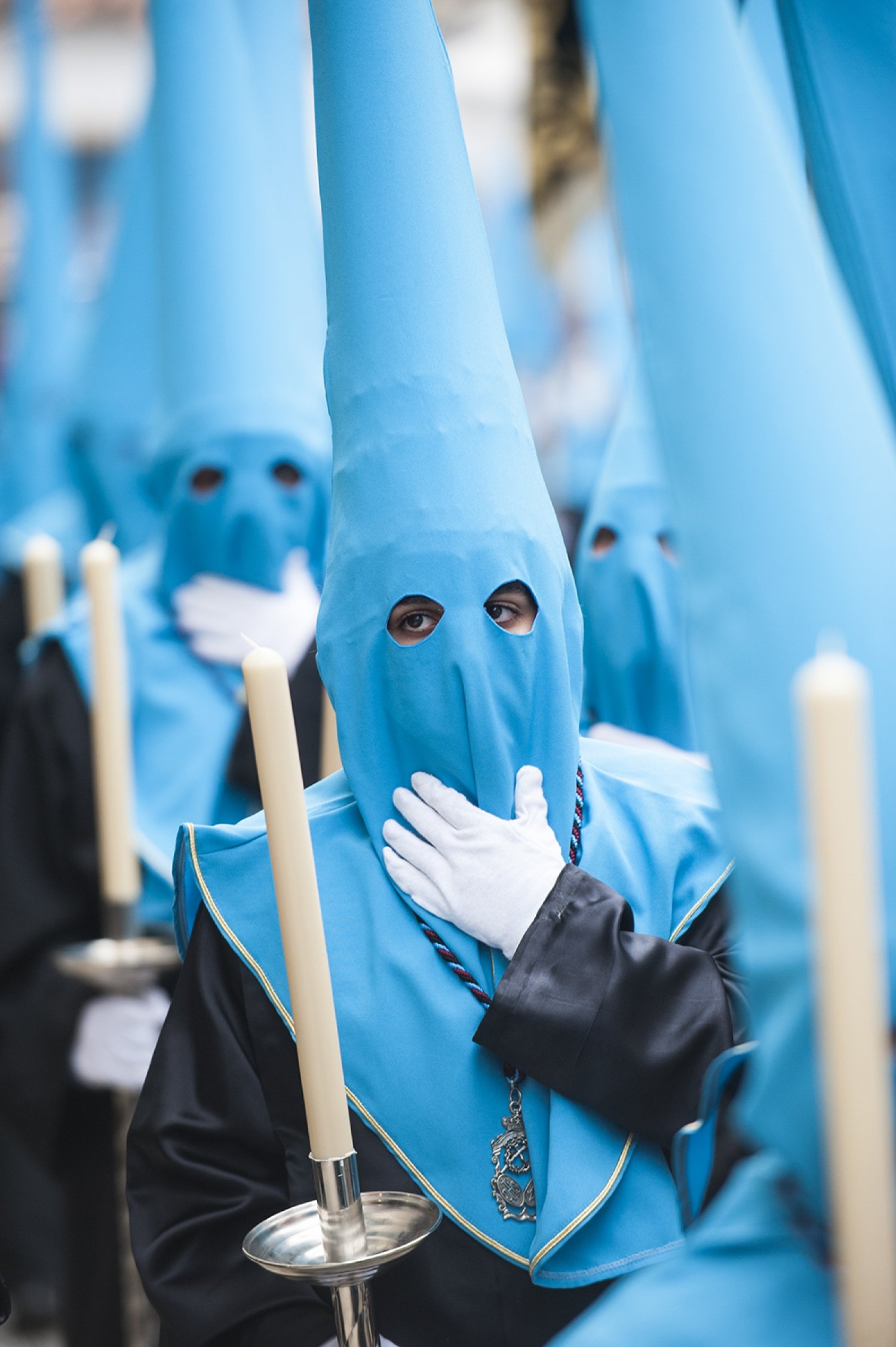
And that's it for another year! Once the final procession has ended you can be sure that the summer season in Marbella will be in full swing! Aside from the religious and ceremonial aspect of Easter Week, this time of year is when the beach clubs start to open, the terraces are scrubbed down for those lovely long evenings and our events calendar really does start to fill! If you are looking for personal recommendations from our local expert team regarding where to go and what to do during Easter week be sure to reach out to us directly by mail or via our social media channels.
Story and Photography by Johnny Gates


